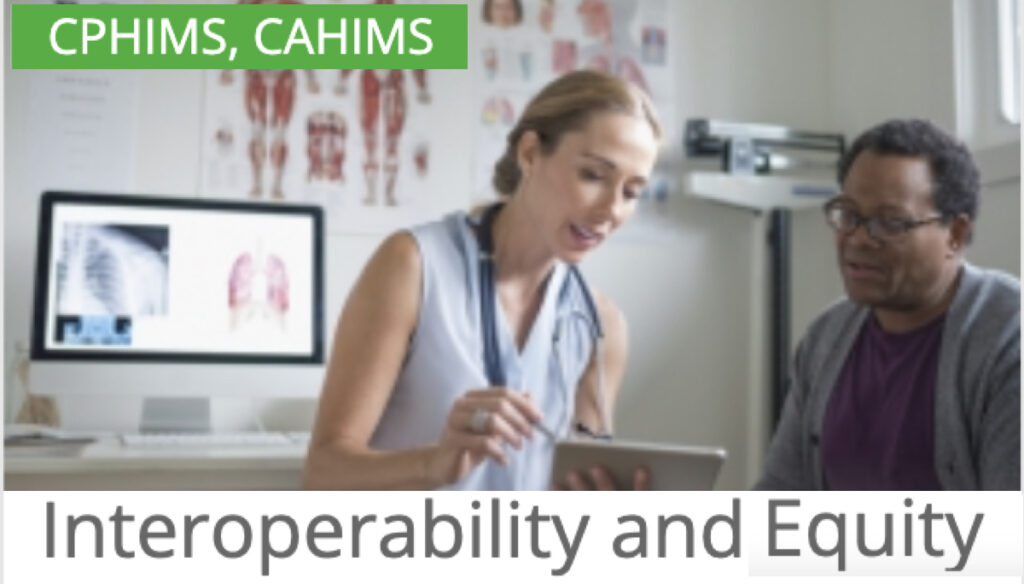
There’s been an interesting surge in evangelist activity recently: I’ve been involved in several podcasts and webinars, all giving new life to the “gimme my data” movement. Here’s one that went live today on the HIMSS Learning Network. (It’s free but you may need to register.)
HIMSS is the big H.I.M. society (more on this below), and while for a long time HIMSS was seen as stuffy, lately they’ve livened up. This series is hosted by the ever-fun Kat Jercich, who has a gift for making the most complex subjects sound like no big deal. My co-panelists were:
- Maria Alizondo of UCLA Health System‘s HIM department. “HIM” is the Health Information Management people – the ones who actually hold onto your data, move it around, keep it secure, etc.
- Ako Kwammie of the Colorado RHIO (regional health information exchange, aka “rio”). RHIOs are the people who move our data between hospitals etc.
For openers we discussed the “Final Rule” (see below) that’s giving patients access to their data. Other highlights:
- Ako, around 43 minutes: “The pandemic has put a spotlight on interoperability. A lot of what we’ve been asking for for years has mysteriously appeared” (to help deliver healthcare with less contact)
- Maria, around 24 minutes, notes that her department added staff, anticipating a surge in workload when OpenNotes began. It didn’t happen. That anticipated surge is one of the worries that’s turned out to be a myth.
- Around 26 minutes, re patients correcting their records, I noted that the FHIR project that’s underway is called Patient Requests For Corrections: we (you) won’t be able to go in there and directly edit the doctor’s notes.
Why shouldn’t patients directly edit the chart? For one thing, some people are nuts: I cite the poor fools in South Dakota ICUs last year who denied they had COVID, right up until their death. Politicized disinformation is lethal. I said, “What we want is partnership, not dominance.”
While Ako and Maria discussed interoperability’s impact on the H.I.M. audience (while supporting patient access), I pointed “beyond the bytes” to consider what we patients might want to do with the data in our new wave of apps … including, maybe, 3D printing what we see in our scans.
Why this increase in interest?
Why the multiple invitations lately?
This is surely driven in large part by the “Cures Act Final Rule” that went into effect this year, requiring that patients be given unrestricted access to their own data. We in the movement argued for this for a decade (and some pioneers argued it much longer), and now with this Rule, it’s Federal policy. You must have access to your health data. And by year end, it must be available via software interface, so you’ll be able to use new apps and websites to collect it all, from all your doctors, nurses, hospitals.
So why would this be a hot topic, after the argument’s been won? Well, here’s the thing about long-term evangelism: for years we debated this with outspoken opponents of the concept, and eventually we won. But now it’s a Federal policy that’s reaching everyone who didn’t join that debate, so we get to start over from Genesis.
“No, patients won’t be terrified.”
“No, patients won’t flood your office with phone calls.”
“Yes, patients will discover how many of your mistakes have been lurking in their records. Yes, you’ll have to fix them so they don’t harm the patient. Sorry about that.”
But as you’ll see in upcoming posts, there’s more to health data’s power than just letting us have our information. I’m confident that in the coming years we’ll see how people in need can finally start to have some autonomy – some ability to create a health data world that works for them. More to come, on that.


[…] mentioned last week that there’s been an upsurge in people reaching out to carry forward the message we […]